Check out our shop where you can purchase tours! Learn More
The main road leading from Jerusalem to the Judaean Desert (Route 1) passes through a tunnel that is carved into Mount Scopus. One moment you’re gazing upon Jerusalem and the Old City nestling in the city center, the next, after a few seconds of darkness, you’re exiting the tunnel and the majestic landscape of the Judaean Desert is unfolding before your eyes. When you’re standing at the observation point on Mount Scopus, you can see green olive trees on one side and desert hills on the other.
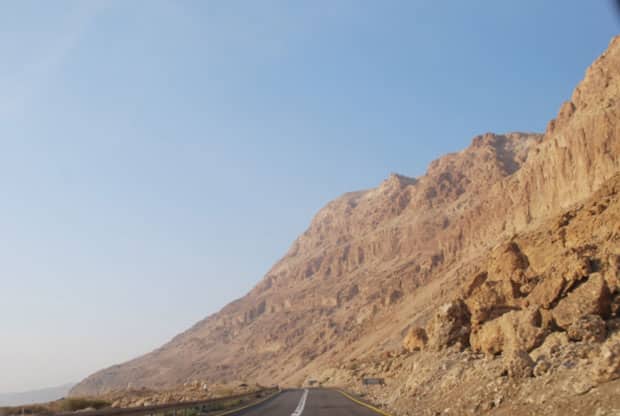
The drive from Jerusalem to Masada takes about an hour and a half.
Take note: there are two ways to approach Masada, from two different directions, and the roads don’t meet at Masada. Most travelers take Road 1 and then Road 90 (through the Dead Sea and Ein Gedi) and reach the eastern part of Masada, where the main entrance, museum, cable car and snake path are located.
Those arriving from the other side, the Arad side, can find a way up through the Roman ramp. A visit to Masada takes at least two hours and in summer it is advisable to do it in the morning because of the heat. In my booklet there is also a trail that circles Masada for those who want to see Masada from an angle that 99.9% of tourists don’t get to see. It can be combined with a tour of the site itself.
Many want to go up the snake trail early in the morning and see the sun rise from the top of Masada. If that’s what you want to do, you can either stay the night at the hostel or pitch a tent at the foot of Masada.
More information about Masada.
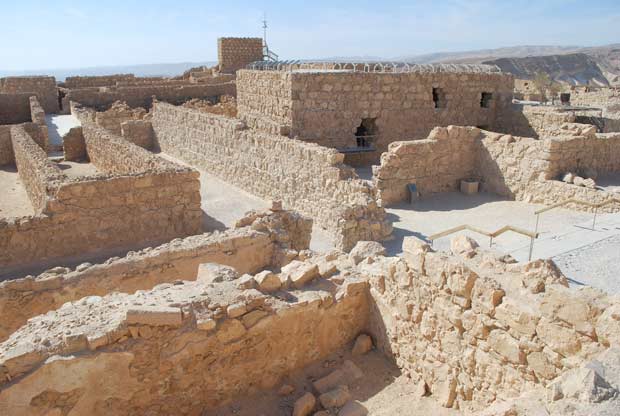
Ein Gedi is located about a 15-min drive north of Masada (closer to Jerusalem). A visit to Ein Gedi can take from one hour to a whole day, depending on your time and capacity for walking.
Take note: if going on a long trek you will need to leave between 8 and 9am. Those wanting to go on the long trails would do well to stay at the Ein Gedi Field School (SPNI).
More information about Ein Gedi.
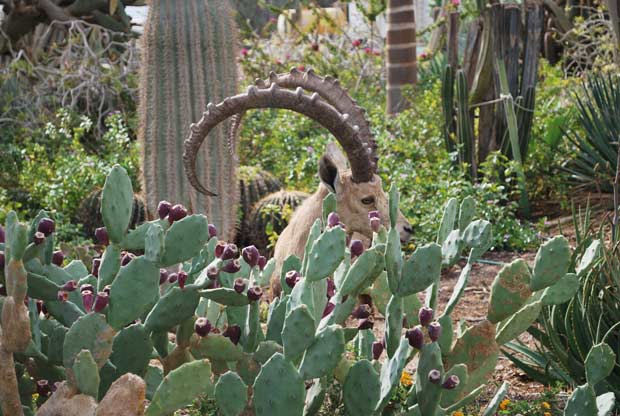
Most of the organized tours traveling to the Judaean Desert don’t stop at the Dead Sea until the end of the day, and with good reason.
After taking a dip in its waters, no one wants to go up Masada. Unlike the Mediterranean beaches, where you can lie for hours, the duration of a visit to the Dead Sea is usually shorter. Although the experience of floating is wonderful, the water is oily and can burn if you have any open cuts. In summertime it’s also extremely hot outside.
More information about the Dead Sea.
Qumran is one of the most important archeological sites in the world: it’s here that the Dead Sea scrolls were found.
The downside is that the scrolls are now in Jerusalem’s Israel museum and the artifacts at the site are of little interest.
To understand and enjoy Qumran you will need either a guide or a guidebook. One or two hours are sufficient time to visit the site.
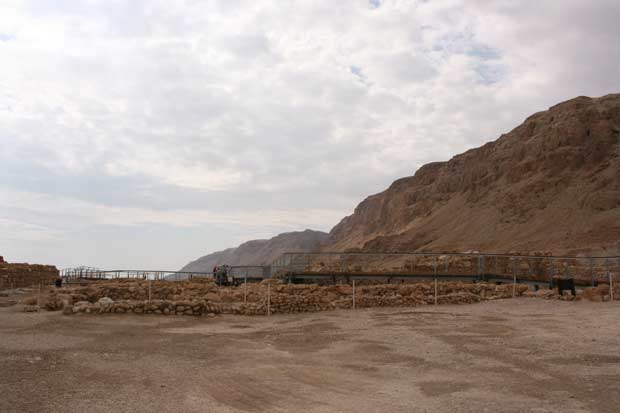
In recent years the site has been mostly closed because of its location right on the border. Today the site has the same opening hours as all national parks. Most of the visitors are Orthodox Christians who come to be baptized in the Jordan River.
Personally, I would recommend staying at least one night in the Judaean desert. Especially if you like the desert, and all the more so if you come in winter between October and March. Most people aren’t aware of it but if you’re staying in Jerusalem and want to visit Masada and the Dead Sea before returning to Jerusalem, you’ll be spending around three hours on the road. There are plenty of accommodation options: you could stay in a tent or hostel, a zimmer or a luxury hotel right on the shore of the Dead Sea.
I recommend traveling to and between the sites in the Judaean desert with a car. It is fairly easy to drive in the desert: there is one road, road 90, that goes from north to south and all of the sites lie next to this road. If you don’t want to hire a car, you can also take a bus. Buses 486 and 487 leave the central bus station in Jerusalem every hour and stop at all the major sites. Bus 44 goes from Jerusalem to Eilat and also stops at all the sites. Bus 421 goes all the way from Tel Aviv to Masada and back, but leaves only twice a day. If you do travel by bus, make sure you know the timetable and remember that there are no buses from Friday afternoon until Saturday night and on Jewish holidays. Another thing to remember is that after floating in the Dead Sea in July, the last thing you will want to do is wait 50 minutes for a bus in 38-degree heat.
Another option is to take a day tour from Jerusalem or Tel Aviv. I recommend the Abraham Hostel tours because they are the cheapest and don’t take you to expensive tourist shops.
Masada Sunrise from Tel Aviv
Masada Sunrise Tour from Jerusalem
Masada, Ein Gedi, and Dead Sea Tour from Jerusalem
Distances:
Almog (north to the Dead Sea) to Neot HaKikar (south to the Dead Sea) – 120 km (74 miles), an hour-and-a-half drive.
Masada to Ein Gedi: 17 km (11 miles), a 15-minute drive
Masada to Jerusalem: 100 km (62 miles), an hour-and-a-half drive
Masada to Tel Aviv: 160 km (100 miles), more than a two-hour drive
Masada to Eilat: 220 km (136 miles), a two-and-a-half-hour drive
Masada to Tiberias: 190 km (118 miles), a two-hour-and-fifteen-minute drive
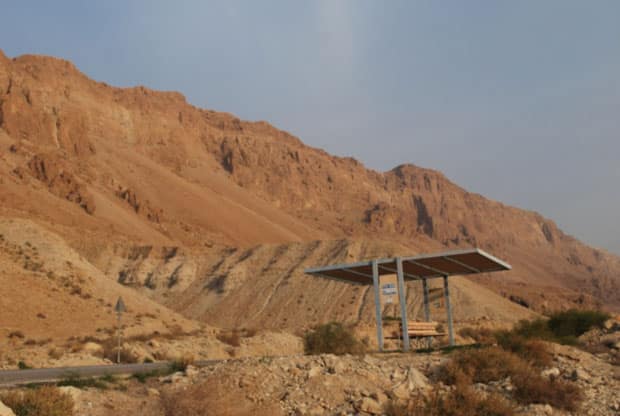
General Information
Size: 80 km (50 miles) long and 25 km (15 miles) wide
Population: A few thousand
Internet access: Wi-Fi is only available in hotels
Banks and ATMs: There are no banks, but ATMs can be found in the Ein Gedi hotel in Kibbutz Ein Gedi, in the Sky Blue Mall at the Ein Bokek hotel strip and in Neot Hakikar. It is advised to have money with you as some ATMs don’t accept all credit cards.
Shopping: There are very few places to buy food. Many independent tourists, especially those traveling by buses lose a lot of time because of logistics. Grocery stores can be found in Kibbutz Ein Gedi, and there are places to eat in the hotel strip in the southern part of the Dead Sea.
Tours: If you only have a day and don’t want to rent a car, I can recommend Abraham Tours. They offer the best value and take you straight to Masada, Ein Gedi and Dead Sea without making unnecessary shopping stops. The tours are conducted without a guide, but you can purchase my booklets and be your own guide.
Masada Sunrise from Tel Aviv
Masada Sunrise Tour from Jerusalem
Masada, Ein Gedi, and Dead Sea Tour from Jerusalem
Guide: If you are interested in a private tour, I would recommend Itay Roten.
What to bring with you: swimsuit and sandals (the sand can get hot and there are pieces of salt in it that can be sharp). Don’t wear jewelry in the Dead Sea as it will turn black. Hiking shoes if you are planning to hike and, most importantly, a bottle (or bottles if planning to hike) of water.
+ Discount Codes
…or as a PDF